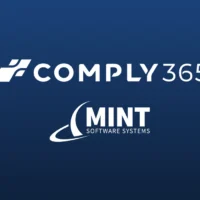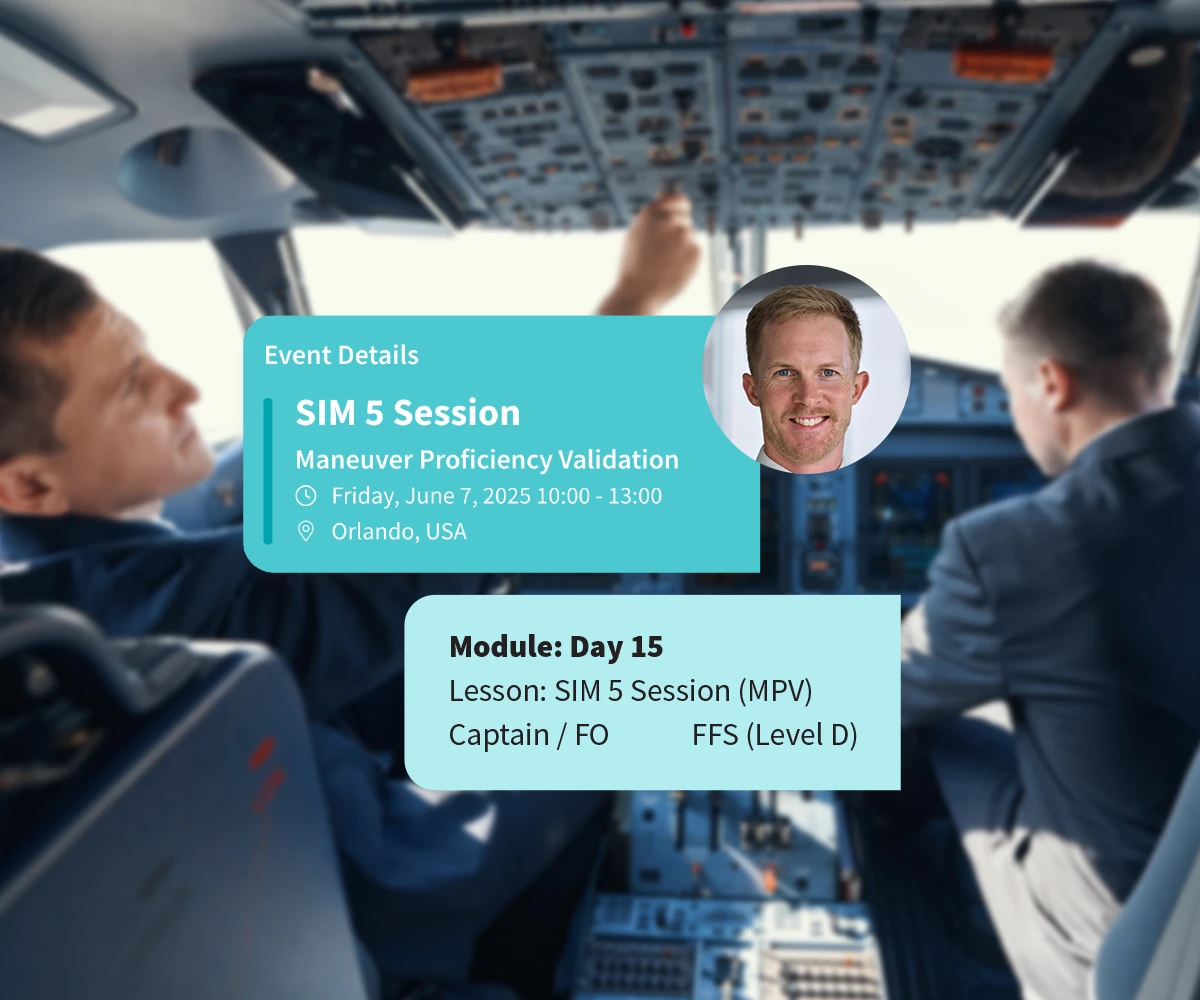Understanding how operators use MINT’s AQP-compliant training management software to improve performance and efficiency
Can an off-the-shelf Training Management System (TMS) provide the complex, data-centric capabilities needed for compliance with the FAA’s Advanced Qualification Program (AQP)? Absolutely! MINT TMS is the aviation industry’s top choice as an AQP-compliant training management system. Its powerful features save operators time and reduce errors at every step of their workflows.
Learn about MINT’s standout capabilities and read use cases based on how our 70+ aviation customers around the world are using MINT TMS to improve flight safety and training performance.
Initial Implementation and Curriculum Development in MINT TMS
Task Analysis & Qualification Standards
In the Curriculum Development phase of the AQP implementation process, MINT TMS enables detailed task analysis and supports the creation of qualification standards within electronic grading forms. Tasks are broken down into subtasks, encompassing cognitive and motor skills, as well as attitudes. Each training objective—Terminal, Supporting, or Enabling—is defined with conditions, standards, and requirements. MINT allows for easy tracking and revision of these standards to maintain up-to-date training materials.
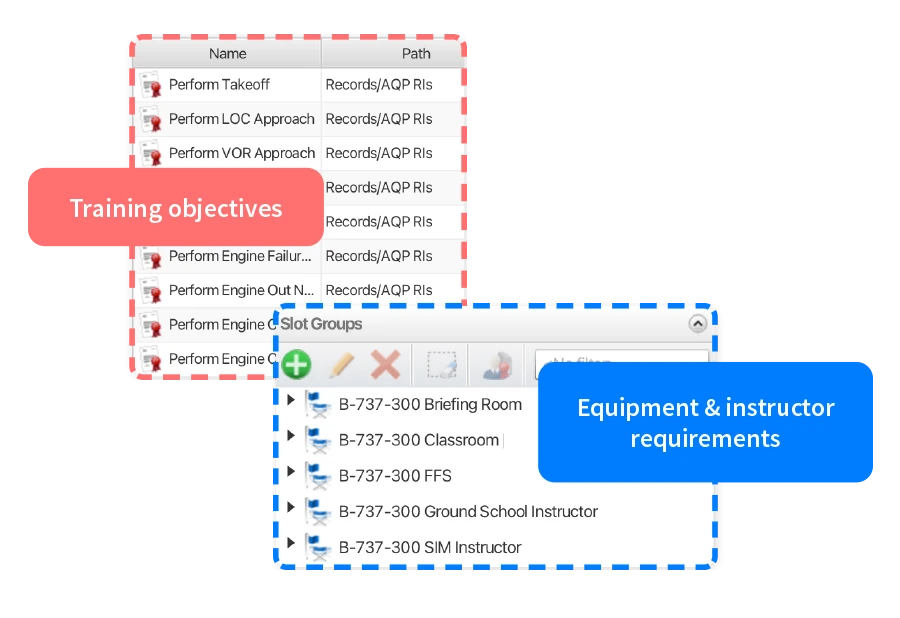
Curriculum Segmentation
Training content is organized into segments, modules, and lessons, distinguishing between different user groups: pilots, instructors, and evaluators. MINT’s intuitive course builder interface makes it easy for users to see requirements, which helps ensure that training is aligned with FAA expectations and remains modular for easy updates. You can build every evaluation form to your program’s specifications. Course templates are reusable, making it easier to build your entire curriculum within the system.
Data Collection and Performance Tracking
MINT TMS captures both individual and crew performance data, facilitating continuous improvement and validating the effectiveness of the AQP training program. Extensive data collection features ensure high-quality feedback and compliance. During your initial implementation, MINT’s experts consult your team on the best practices for collecting data that will help guide future decision-making and analysis through our powerful reporting features. This helps operators scale for long-term success.
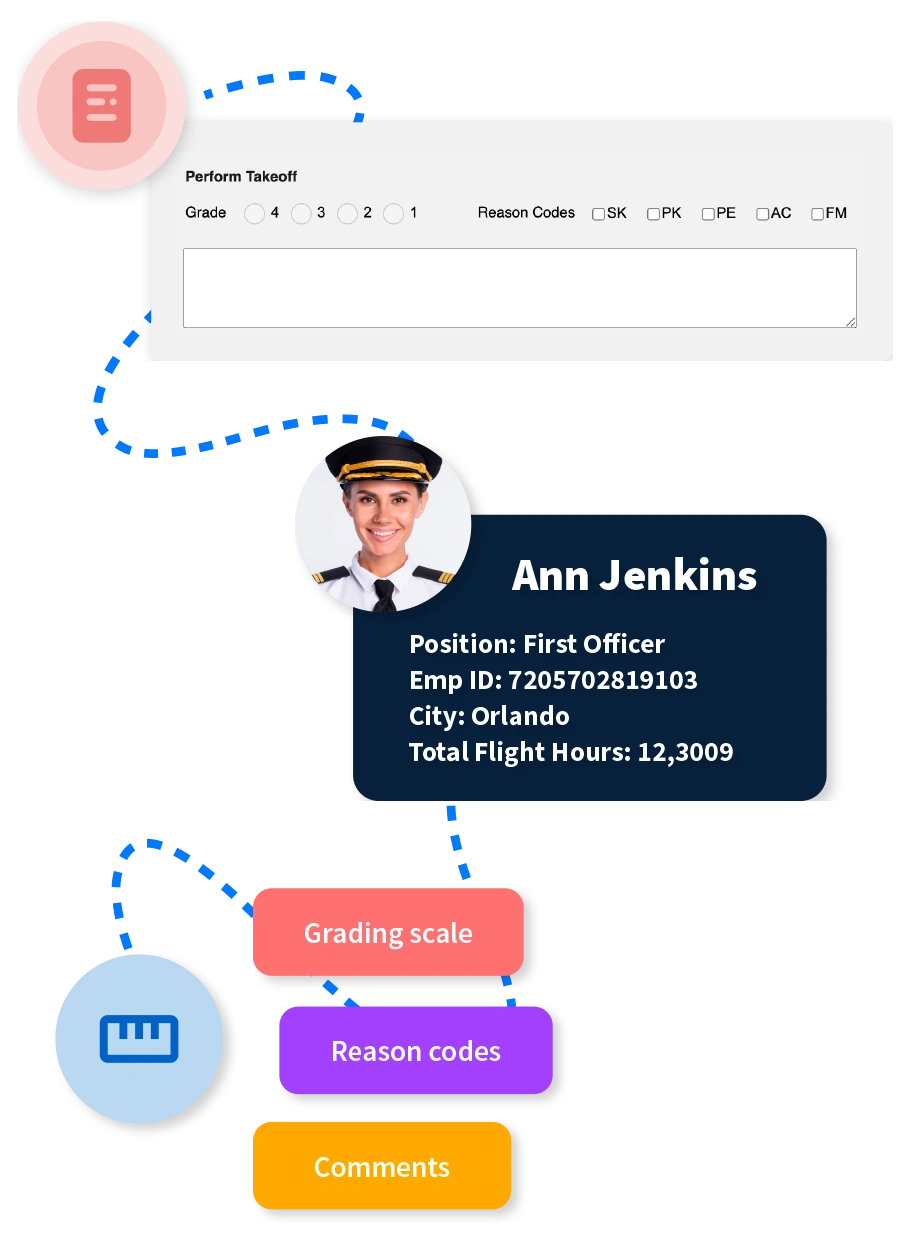
Data is collected through:
- Demographics and Crew Records: Track who is being trained, what they are learning, and how they’re performing.
- Electronic Grade Sheets: Replace paper-based evaluations with real-time digital forms accessible from any location.
- Measurement Codes: Grade sheets can use standard grading scales, reason codes, and comment fields for accurate performance evaluation.
Any data you collect can be compiled into reports for:
- Annual Performance and Insights: Compile trends, corrective measures, maintenance and historical data for analysis.
- Ad-hoc Strategy Reports: Create internal reports to uncover insights that will help improve training outcomes and guide strategic decisions.
- Monthly PPDB Reports: Using MINT’s AQP reporting add-on, generate and submit monthly PPDB reports with de-identified data formatted to the requirements of the FAA and Transport Canada.
Reports to Improve Training Performance Outcomes
Ad-hoc reporting for performance and trend analysis helps uncover training issues with actionable insights. Whether you’re evaluating simulator performance, trainee proficiency, or instructor feedback, MINT’s powerful ReportBuilder can be configured for any data you track within the system. The best part? MINT will teach your team how to quickly build report templates to run complex queries without the need for code or development resources.
Let’s see real uses cases for how aviation operators are leveraging MINT’s powerful reporting capabilities to make high-level decisions that improve flight safety and training performance.
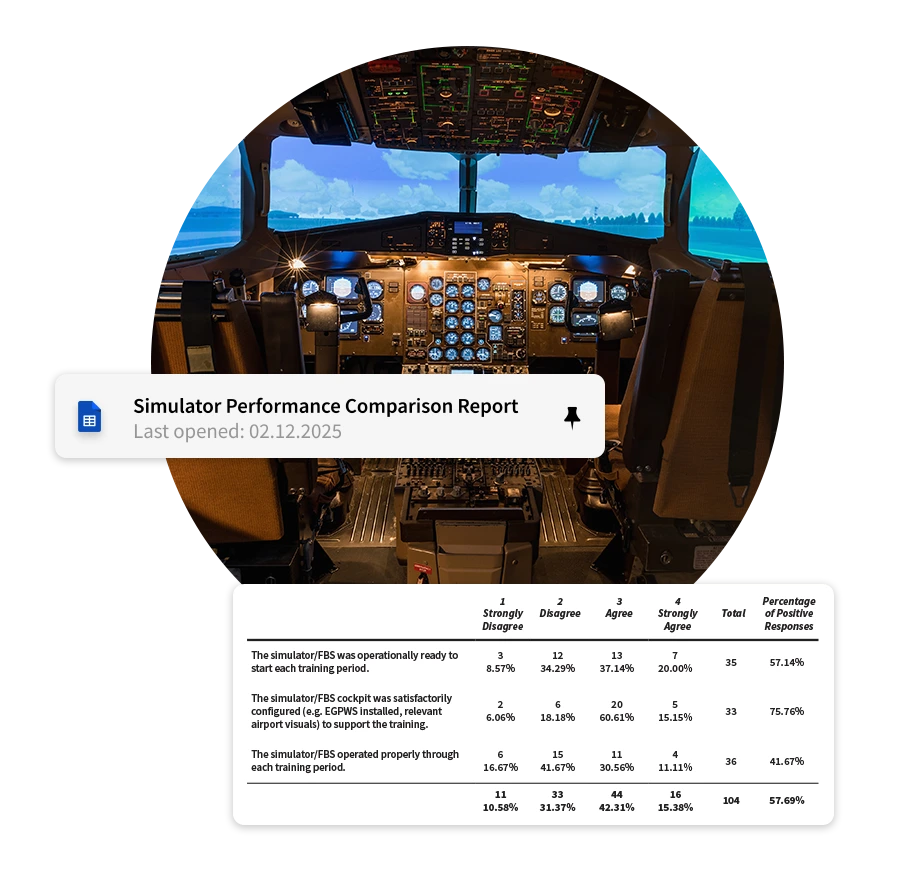
Use Case: Simulator Performance Analysis
One practical application of MINT’s AQP capabilities is identifying issues with specific simulators or equipment. Using simulator-specific reports, MINT can compare pilot performance across different devices and correlate them with instructor comments to diagnose equipment-related training challenges. For example, when comparing data from Simulators 1, 2, and 3, instructors found reduced training effectiveness in Simulator 3.
MINT can facilitate this by:
- Aggregating pilot performance data by simulator
- Automating post-training surveys to gather feedback
- Generating reports with feedback comments and raw data for analysis
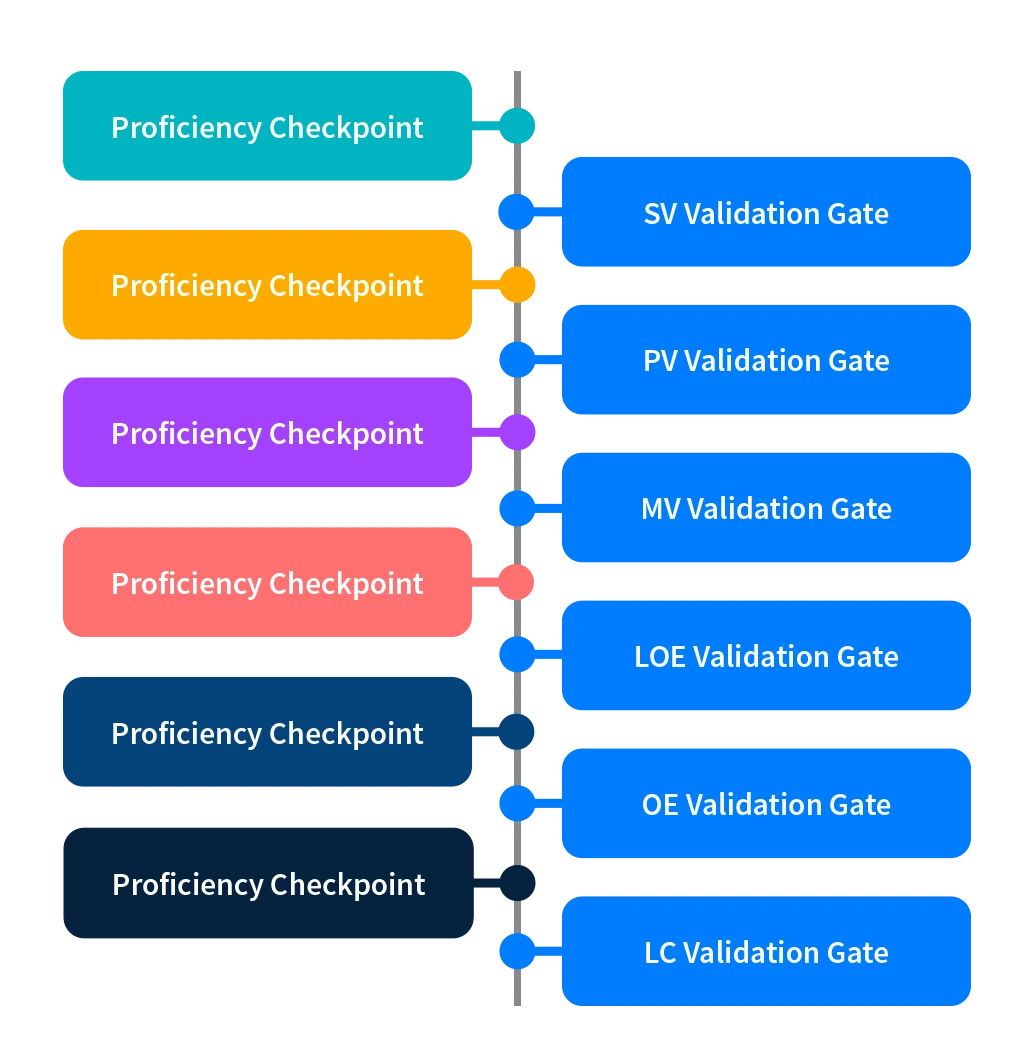
Use Case: Making Curriculum Changes Based on Proficiency Tests
Are trainees able to successfully pass proficiency tests ahead of scheduled validation gate evaluations? Could you reduce a course’s length (and overall costs) by one day and still achieve the same performance and proficiency levels among trainees? Or are trainees struggling with the same topic and could use additional simulator time to improve passing score rates?
Adding additional proficiency tests before AQP validation gates can give training departments better insights into how curriculums and course schedules can be improved to save costs or increase passing rates among trainees.
Training departments can use MINT to facilitate this by:
- Building additional proficiency tests into the curriculum schedule using MINT’s FormBuilder
- Aggregating performance data by course module
- Generating reports to identify areas within a curriculum schedule to add additional training or reduce length of courses
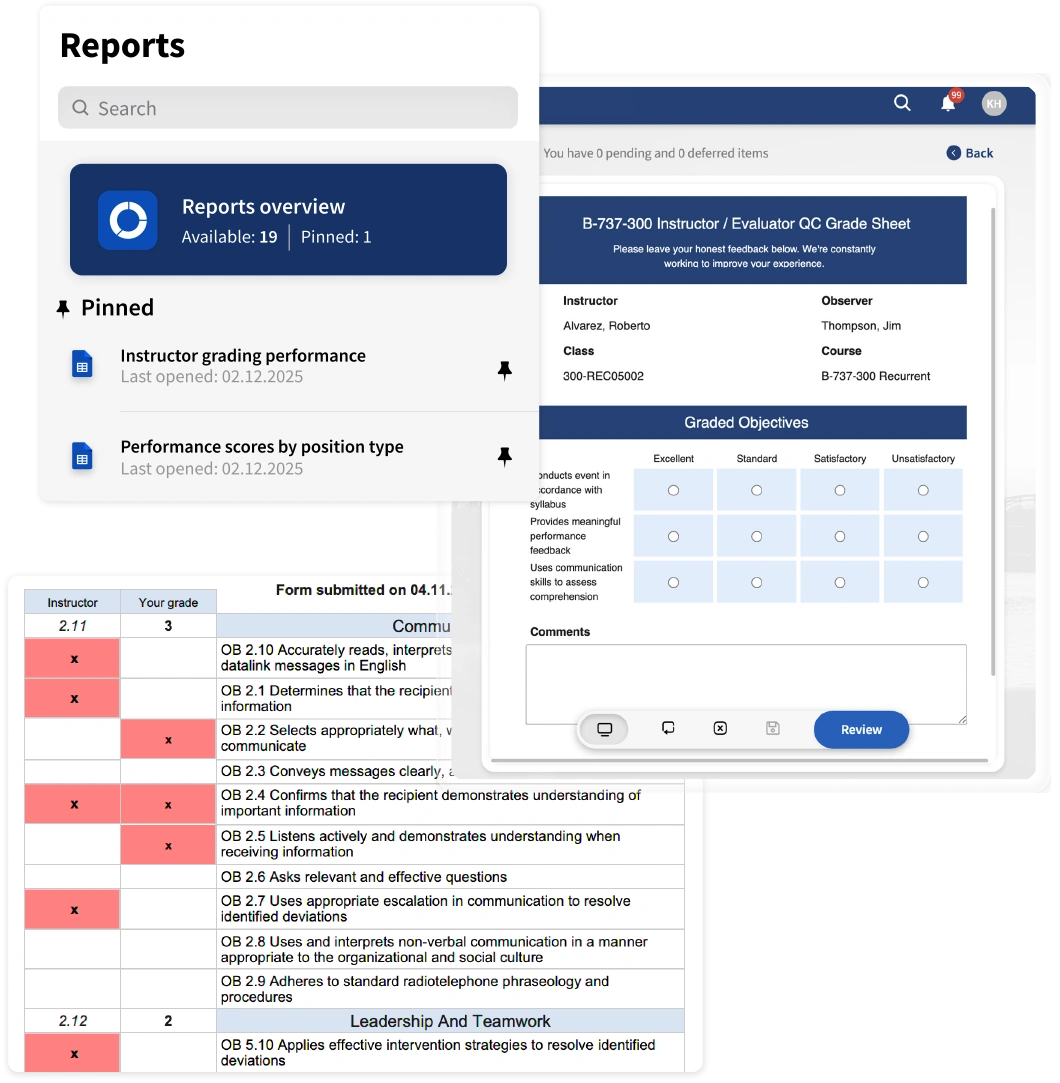
Use Case: Instructor Performance Analysis
How do your full-time instructors compare to part-time instructors? MINT’s ad-hoc reporting can compare performance data to give you valuable insight into correlations between performance and employment type or any other piece of tracked demographic data. To identify specific instructors who are grading too high or low, MINT supports instructor calibration, also known as concordance, to help you uncover potential instructor biases within grading. All employee data is de-identified and linked through internal ID numbers to maintain AQP compliance.
These insights help validate concerns and guide corrective actions—demonstrating how MINT is not just a training system but a strategic decision-making tool.
Preventing Potential Non-Compliance Issues
MINT TMS can streamline compliance by automatically detecting issues and resolving them before they become potentially expensive mistakes.
Use Case: Automatically Notifying Schedulers of Potential De-Qualification Risks
If a trainee is struggling in a specific area, MINT can be configured to notify scheduling planners to alert them of a potential de-qualification risk. The trainee can then be proactively scheduled for remedial training, preventing the risk of flying unqualified flight crew members or disrupting work schedules. This workflow alert can run automatically and serve as an additional layer of compliance oversight.
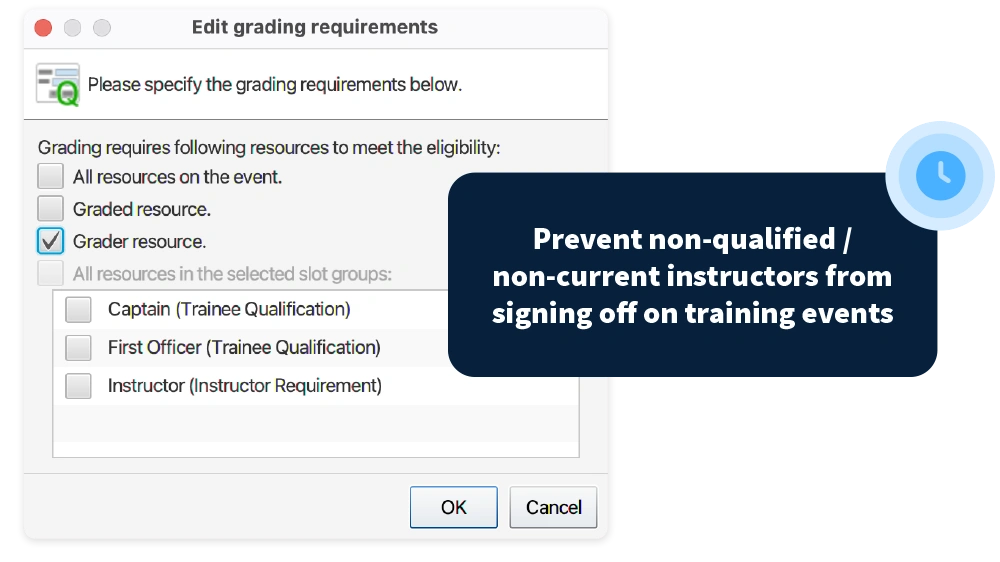
Use Case: Automatically Preventing Non-Qualified Instructors from Grading
There are times when an instructor is scheduled to conduct a future training event. On the day the schedule was created, the instructor was expected to complete currency requirements. If the instructor didn’t complete the requirements they were supposed to, and no one caught it on the daily invalid instructor list, what happens next? MINT will not allow the invalid instructor to sign off on any training events. This is just one of many invaluable safety nets you can configure into the system to reduce non-compliance risks.
Creating More Efficient AQP Training Processes with MINT TMS
In addition to streamlining compliance, MINT can help create more efficient workflows and processes to save a significant amount of time and expenses.
Use Case: Saving Time on Monthly FAA AQP Reports
MINT TMS simplifies regulatory compliance with automatic generation of FAA reports, including:
- Proficiency Data Report Table (PDRT)
- Skill-Reason Table (SklRsn)
- Training Objectives Report Table (TORT)
MINT’s AQP reporting add-on complies with FAA and Transport Canada requirements and streamlines PPDB reporting. Our add-on will de-identify resources, gather your AQP data, and format it in FAA regulatory standard format. With just a few clicks, MINT generates your pilot proficiency performance database report, saving you countless hours of manual labor every month.
Use Case: Forecasting Demand for Flexible Instructor Management
Is the company onboarding several new hires? Are you working around multiple instructor vacation requests? By tracking qualifications that are coming up for renewal, MINT can forecast overall training demand and help optimize staffing while ensuring compliance with AQP standards. In scenarios with fluctuating training loads, MINT enables intelligent scheduling and instructor utilization based on the type of employment, role, or other desired properties.
Suppose a busy season or major hiring event is approaching and you want to utilize more part-time or contract instructors, give priority to full-time instructors first, or choose instructors based on seniority level. Anything is possible within the data you manage in MINT TMS.
Depending on how your data is labeled or configured within the system, you can select the data property, whether it is ‘employment type’ or ‘role,’ when setting the priority of scheduling criteria. From there, you can choose to prioritize a specific employment type or role when the system is scheduling instructors for training events.
Learn How MINT Can Streamline Your AQP Training Processes
MINT TMS is a powerful AQP-compliant training management system that enables you to become AQP-compliant, offering flexibility and in-depth data insights. Its end-to-end support for AQP training—from curriculum development to detailed reporting—makes it a vital tool for any airline or aviation training organization aiming to deliver high-quality, compliant, and adaptive training programs.
Configurable for Any Training Methodology
It’s important to note that while MINT TMS stands out as a highly adaptable AQP training management system, it can be configured to support almost any training methodology: EBT, CBT, ATQP, CBTA, and more. Whether you follow traditional training structures or the FAA’s AQP model, MINT TMS accommodates any needs through configurable workflows and currency rules, data management tools, and robust reporting features.
For those seeking to streamline their Advanced Qualification Program, MINT TMS provides the capabilities and customization necessary for training success.
Request a Demo